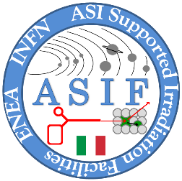By exploiting experimental results, the combined effort of the physicists involved with the Galprop model for propagation in galaxy and HelMod for the propagation in heliosphere, the local interstellar spectra (LIS) for Galactic Cosmic Rays species up to Z=28 (Nickel) were derived. These spectra are available and accessible from the current webpage.
Some of the currently available LIS's were derived accounting for AMS-02 data published up to TV rigidity region. The exploitation of AMS-02 data allowed one to approach the procedure with high statistic data of unprecedent accuracy. Currently, the observation data at Earth on cosmic rays species from HEAO3-C2 (from october 1979 to June 1980) and AMS-02 were employed for absolute scale normalization of fluxes (see Sects. 3-3.2 in Boschini et al. 2020).
 The GALPROP LIS for all CR species (dashed lines) are compared to the Voyager 1 data (filled circles, Cummings et al 2016). We also show updated Voyager 1 data for H and He (open circles) taken from September 1, 2012 to November 13, 2019. The elements are sorted by approximate amount of primary contribution: first group is mostly primary, second – with significant primary contribution, and third – mostly secondary.
The GALPROP LIS for all CR species (dashed lines) are compared to the Voyager 1 data (filled circles, Cummings et al 2016). We also show updated Voyager 1 data for H and He (open circles) taken from September 1, 2012 to November 13, 2019. The elements are sorted by approximate amount of primary contribution: first group is mostly primary, second – with significant primary contribution, and third – mostly secondary. Galprop-HelMod join effort
Currently published articles regarding local interstellar spectra (LIS):
- Solution of Heliospheric Propagation: Unveiling the Local Interstellar Spectra of Cosmic Ray Species Astrophys. J. 840:115, 2017
- HELMOD In The Works: From Direct Observations To The Local Interstellar Spectrum Of Cosmic-Ray Electrons Astrophys. J. 854:94, 2018
- Deciphering the Local Interstellar Spectra of Primary Cosmic-Ray Species with HelMod Astrophys. J. 858:61, 2018
- Deciphering the Local Interstellar Spectra of Secondary Nuclei with the Galprop/Helmod Framework and a Hint for Primary Lithium in Cosmic Rays Astrophys. J. 889:167, 2020
- Inference of the Local Interstellar Spectra of Cosmic-Ray Nuclei Z < 28 with the {GalProp}-{HelMod} Framework Astrophys. J. Supplement 250:27, 2020
- The Discovery of a Low-energy Excess in Cosmic-Ray Iron: Evidence of the Past Supernova Activity in the Local Bubble The Astrophysical Journal 913:5, 2021
- A Hint of a Low-energy Excess in Cosmic-Ray Fluorine The Astrophysical Journal 925:108, 2022
- Spectra of Cosmic Ray Sodium and Aluminum and Unexpected Aluminum Excess The Astrophysical Journal 933:147, 2022
- Spectra of He Isotopes and the 3He/4He Ratio The Astrophysical Journal 981:85, 2025


